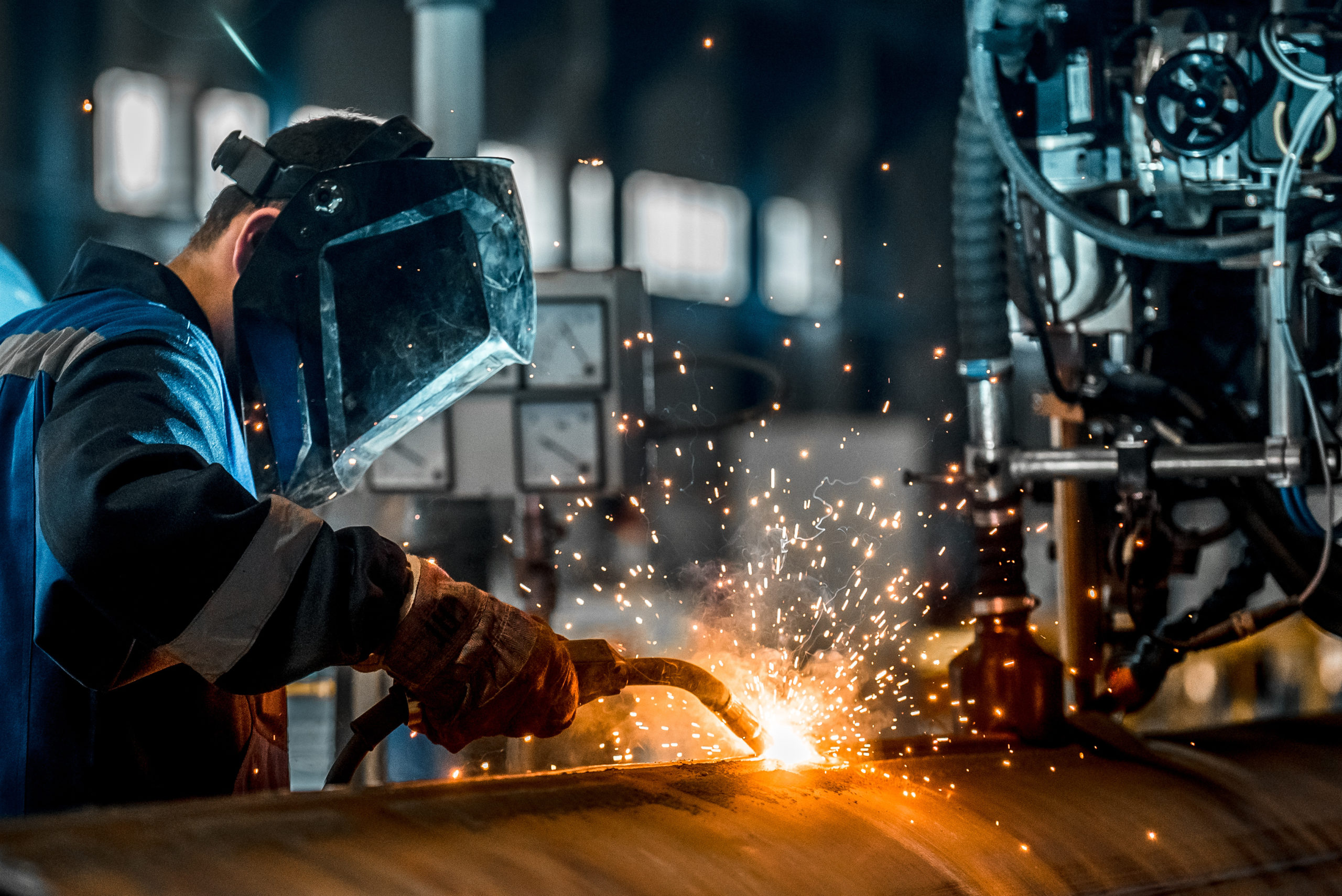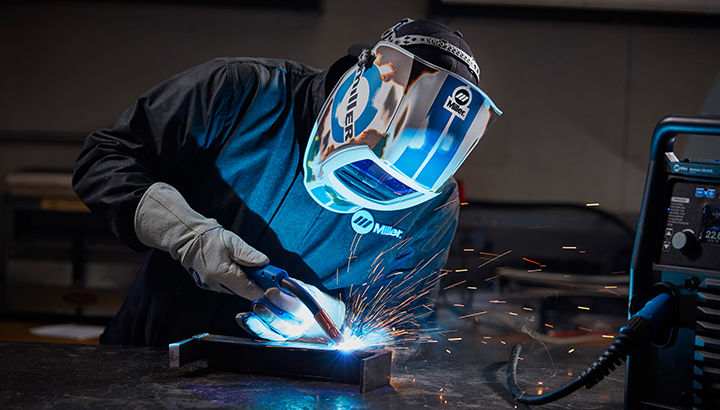Common Welding Repair Issues and Exactly How to Address Them Effectively
Welding repair services commonly experience a variety of problems that can jeopardize the honesty of the final product. Common problems consist of inadequate penetration, porosity, and imbalance, amongst others. Each flaw offers special difficulties that need details methods for resolution. Comprehending these issues is important for welders intending to improve their abilities and end results. This conversation will check out these typical welding repair work problems and reliable approaches to address them.
Poor Infiltration
Inadequate infiltration takes place when the weld metal stops working to completely fuse with the base product, causing weak joints and prospective architectural failings. This concern typically stems from not enough warm input, incorrect electrode angle, or incorrect welding rate. Welders may run into insufficient infiltration as a result of a miscalculation of the necessary criteria for a specific product density or type. Additionally, contamination on the base product's surface area can prevent efficient bonding, exacerbating the problem. To deal with insufficient penetration, welders must assure suitable setups on their devices and preserve a clean work surface. Routine inspection of welds is suggested to recognize any type of deficiencies early, allowing for timely improvements and the prevention of jeopardized structural integrity in welded assemblies.
Porosity
Porosity is a common problem in welded joints that manifests as little gas bubbles entraped within the weld steel. This defect can compromise the stability of the weld, causing lowered strength and possible failure under tension. Belgrade Welding. Porosity usually occurs from contamination, dampness, or inappropriate welding techniques, which allow gases to escape into the liquified weld swimming pool. To address porosity, welders must assure correct surface area preparation, maintain a clean workplace, and use ideal welding specifications. In addition, picking the ideal filler product and shielding gas can alleviate gas entrapment. Regular assessment and testing of welds can aid identify porosity early, guaranteeing timely corrective actions are taken, thus maintaining the top quality and dependability of the bonded framework
Misalignment
Misalignment in welding can develop from numerous factors, including incorrect setup and thermal expansion. Recognizing the root causes is essential for effective resolution. Numerous improvement strategies are available to straighten parts and assure structural stability.
Reasons for Imbalance
Welding imbalance commonly comes from a selection of underlying concerns that can endanger structural integrity. One main reason is incorrect fit-up of parts before welding, which can lead to spaces and unequal surface areas. Variations in thermal expansion during the welding process can likewise lead to distortion, particularly if the materials being joined have various coefficients of growth. In addition, insufficient fixturing and clamping might fail to hold elements safely in position, leading to motion throughout welding. Poorly kept equipment, consisting of welding makers and tools, may present disparities in the weld bead, more adding to imbalance. Driver mistake, stemming from not enough training or experience, can additionally play a significant duty in developing misaligned welds.

Improvement Methods Offered
Dealing with misalignment efficiently needs a mix of corrective techniques tailored to the particular issues available. One usual approach is making use of components or jigs to hold parts in the correct setting during welding, making sure regular alignment. Furthermore, pre-heating the products can help in reducing distortion and boost fit-up. For significant imbalance, mechanical realignment techniques, such as using hydraulic jacks or clamps, can be utilized to deal with the placement before welding. Post-weld warmth treatment might likewise be required to ease stress and anxieties triggered by imbalance. Careful examination and modification throughout the arrangement phase can protect against misalignment concerns from coming to be considerable troubles, advertising a smoother welding procedure and enhancing general structural integrity.
Distortion
Distortion is a common difficulty in welding that can emerge from different variables, including irregular heating & cooling. Recognizing the root causes of distortion is vital for executing reliable prevention techniques. Resolving this concern not just enhances architectural honesty yet likewise boosts the total quality of the weld.
Reasons for Distortion
When subjected to the intense warmth of welding, products commonly undergo adjustments that can result in distortion. This phenomenon largely occurs from thermal growth and tightening throughout the welding procedure. As the weld area heats up, the product increases; upon cooling, it gets, which can produce interior tensions. In enhancement, uneven heating across a work surface can intensify these stresses, leading to bending or flexing. The sort of product additionally plays a significant role; metals with varying thermal conductivity and coefficients of growth might react in different ways, causing unpredictable distortions. Poor joint design and poor fixturing can contribute to misalignment during welding, enhancing the chance of distortion. Understanding these reasons is important for reliable welding fixing and prevention approaches.
Prevention Techniques
Efficient avoidance methods for distortion during welding concentrate on managing warmth input and making sure proper joint design. Maintaining a regular warmth input helps to decrease thermal expansion and tightening, which can cause distortion. Using techniques such as pre-heating the workpiece can additionally lower the temperature level slope, advertising uniform home heating. Furthermore, picking ideal joint layouts, such as T-joints or lap joints, can improve stability and decrease stress concentrations. Implementing appropriate fixturing to safeguard the workpieces in position further aids in maintaining positioning throughout the welding procedure. Staggered welding sequences can distribute heat more equally, preventing localized distortion. By applying these techniques, welders can significantly reduce the likelihood of distortion and improve the total high quality of their welds.
Cracking
Breaking is an usual problem come across in welding repair work, often resulting from various aspects such as inappropriate cooling prices, product choice, or insufficient joint preparation. The occurrence of fractures can considerably jeopardize the integrity of the weld, resulting in possible failures during operation. To resolve this concern, welders should first assess the source, guaranteeing that materials work and suitably picked for the certain application. Additionally, regulating the air conditioning rate throughout the welding process is crucial; fast air conditioning can cause anxiety and result in splitting. Appropriate joint style and preparation likewise add to reducing the risk. Implementing these approaches can improve weld high quality and toughness, ultimately decreasing the likelihood of fracturing in finished weldments.

Incomplete Combination
A significant concern in welding repair services is incomplete fusion, which occurs when the weld steel does not adequately bond with the base product or previous weld passes - Montana Mobile Welding and Repair Belgrade. This problem can result in weak points in the joint, potentially jeopardizing the honesty of the welded framework. Variables adding to incomplete combination consist of insufficient heat input, incorrect welding strategy, and contamination of the surface areas being joined. To resolve this issue successfully, welders should guarantee proper pre-weld cleansing and surface prep work, as well as readjust their welding specifications to accomplish sufficient penetration and fusion. Regular examination throughout the welding procedure can likewise assist determine i thought about this insufficient fusion early, enabling prompt restorative steps to boost the total quality of the weld
Overheating
While welding fixings can enhance structural honesty, overheating presents a significant challenge that can cause material deterioration. Too much warm throughout welding can change the mechanical buildings of metals, leading to lowered stamina, increased brittleness, and bending. This sensation is especially crucial in high-stress applications where structural reliability is extremely important. Determining overheating can entail aesthetic examinations for discoloration or distortion, as well as keeping track of temperature during the welding process. To mitigate the threats associated with getting too hot, welders should use ideal strategies, such as controlling warmth input, changing travel speed, and using suitable filler products. In addition, implementing pre- and post-weld warmth treatments can help bring back product buildings and boost the total high quality of the fixing, ensuring lasting performance and safety and security.
Regularly Asked Concerns
What Are the Typical Signs of a Welding Flaw?

Exactly How Can I Evaluate My Welds for Top quality?
To test welds for top quality, one can utilize visual evaluations, you could look here ultrasonic testing, and radiographic techniques. Each strategy ensures structural integrity, determines issues, and confirms adherence to defined standards, inevitably improving the integrity of the welded joints.
What Safety Safety Measures Should I Take While Welding?
When welding, one ought to focus on safety by putting on proper individual safety equipment, ensuring proper air flow, safeguarding flammable materials away, keeping a clean office, and recognizing surroundings to protect against injuries and accidents.
Can I Fix a Weld Without Redesigning the Entire Joint?
Fixing a weld without renovating the entire joint is feasible, depending upon the damages (Welding). Methods such as grinding, including filler material, or utilizing a welding procedure can successfully address specific defects while preserving the bordering structure
What Equipment Are Vital for Reliable Welding Services?
Crucial devices for reliable welding fixings include a welding machine, cable brush, mill, safety gear, clamps, and filler materials. Each tool plays an essential duty in making certain top quality and safety and security throughout the repair procedure. Porosity commonly arises from contamination, moisture, or improper welding techniques, which allow gases to leave right into the molten weld swimming pool. Improperly conserved devices, including welding equipments and tools, might introduce variances in the weld bead, further contributing to why not look here misalignment. When subjected to the intense heat of welding, products usually undertake adjustments that can lead to distortion. Breaking is an usual issue come across in welding repair work, commonly resulting from numerous variables such as inappropriate air conditioning rates, product choice, or inadequate joint prep work. A substantial problem in welding repairs is incomplete combination, which takes place when the weld steel does not properly bond with the base material or previous weld passes.